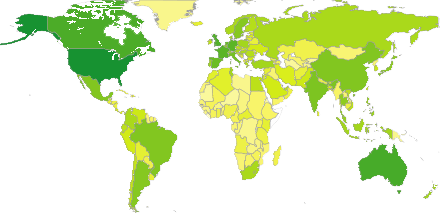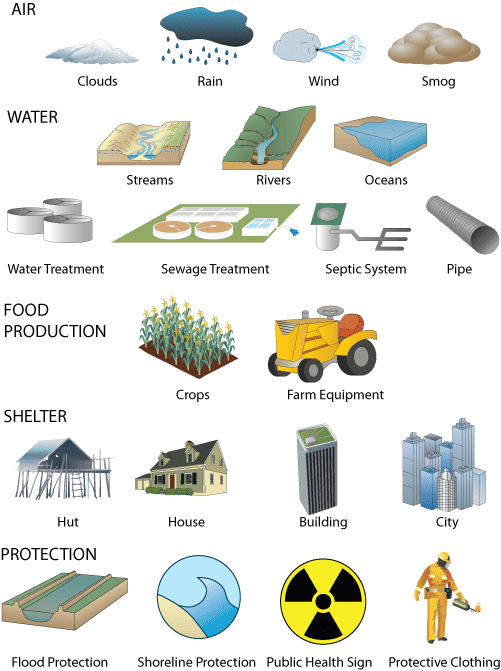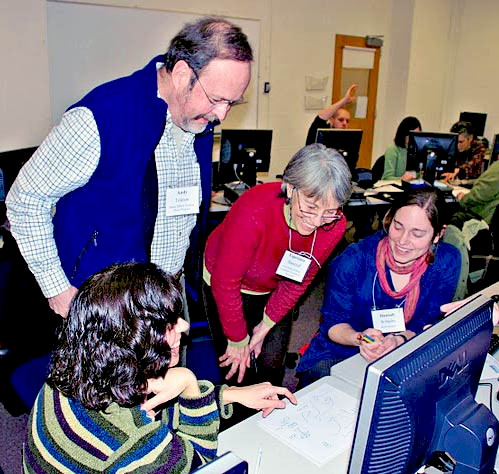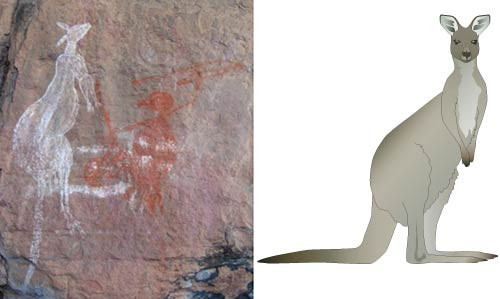Creating a global symbol language
Bill Dennison ·As the Integration and Application Network continues to add symbols to its growing symbol library and associated image library, it is with the idea that we are organically growing a global symbol language. These symbols can be combined in order to construct conceptual diagrams (or 'thought drawings'), in which the essential attributes of an issue are graphically depicted. At this point, it is worth asking what it means to be 'global'.
The United Nations is a global attempt at governance and includes 192 countries or 'nation states'. There are a plethora of different languages and dialects in the world, and there are 154 languages that at least 3 million people speak. Sports are a universal human experience, and the Olympics are a global manifestation of athletic achievement. The 2008 Summer Olympics had 204 countries participating, and a fewer number at Winter Olympics (80 countries in 2010). The most global sport is soccer, or football, and the 2010 FIFA World Cup attracted 204 countries vying to qualify for the tournament held every four years. From these examples, it can be concluded that the number of countries involved should be on the order of 200 to be considered 'global'. The Integration and Application Network symbol libraries have attracted people from 232 countries who have registered and downloaded symbols, so by that measure, it is global.

Another measure of how global an activity is could be viewed in terms of how it relates to basic human needs. These basic human needs can be expressed as a) subsistence, b) protection, c) affection, d) understanding, e) participation, f) leisure, g) creation, h) identity, and i) freedom (ala Manfred A. Max-Neef and colleagues). So, how would a conceptual diagram using symbols relate to these basic human needs? First, a) subsistence in terms of air, water, food and shelter are very common themes in the conceptual diagrams created using the IAN symbol library. The symbol libraries depict air (e.g., clouds, rain, wind, smog) and various water bodies (e.g., streams, rivers and oceans). Symbols of water and sewage treatment, septic systems and pipes are also available. Food production is depicted using crops and farm equipment. Shelter is depicted using a variety of huts, houses, buildings and even cities. b) Protection is a more abstract concept, but there are symbols and diagrams depicting flood protection, shoreline protection and various public health symbols are used and people wearing protective clothing have been used as well.

c) Affection is expressed through the creation of an attractive conceptual diagram that depicts a geographical location that someone is fond of, alternatively, a diagram about a process that is near and dear to someone. Conceptual diagrams are very much about the d) understanding of a place or process, and drawing a diagram can often crystallize thoughts. The act of creating a conceptual diagram is a very e) participatory process, and IAN has even created a game based on conceptual diagrams called 'Conceptionary' (see previous blog post). One of remarks that most participants of 'Conceptionary' make after playing is that it is "fun". Drawing with colored pencils is something many people have not done in decades, but it can be an essential part of making symbols and diagrams, and something done in f) leisure time. The development of conceptual diagrams is an inherently g) creative process, involving both right and left brain processes. Conceptual diagrams can help establish an h) identity for a group of people, particularly when easily recognizable and iconic symbols or geographic features are used. The i) freedom to create diagrams about future scenarios, or to depict issues or concerns is only limited by one's imagination.

Conceptual diagrams tap into three ancient and global aspects of human expression; art, symbols, and story telling. Cave paintings that are 30,000 years old have been found which represent a primitive art form. These paintings of people hunting or wild animals use symbolic representations of animals that can be very lifelike. Art has evolved significantly using various media, and conceptual diagrams using vector-based IAN symbols are just a modern version of cave drawings. The importance of story telling to convey information is a key manner of human communication. Stories can be both oral and visual, and a good conceptual diagram is the visualization of a story.

My conclusion is that based on 1) the widespread use of IAN symbol libraries to build conceptual diagrams, 2) the use of conceptual diagrams to depict or fulfill basic human needs and 3) the ability of conceptual diagrams to access art, symbols and story telling, that creating a global symbol language is indeed possible.
About the author
Bill Dennison

Dr. Bill Dennison is a Professor of Marine Science and Vice President for Science Application at the University of Maryland Center for Environmental Science.
Next Post > Dugong oil vat, sand mining and Geoff Moore
Comments
-
sharylcolleano 11 years ago
Hey there! This is my first visit to your blog!
We are a group of volunteers and starting a new initiative in a community in the same niche.
Your blog provided us useful information to work on. You
have done a wonderful job! -
Diana Niemann 8 years ago
I just came across your website while I was looking for images to use for class notes for students at our high school who are learning English as a second language. This website is a great resource! Thank you for making these images available - if all goes well this will make a big difference in helping our students learn English!